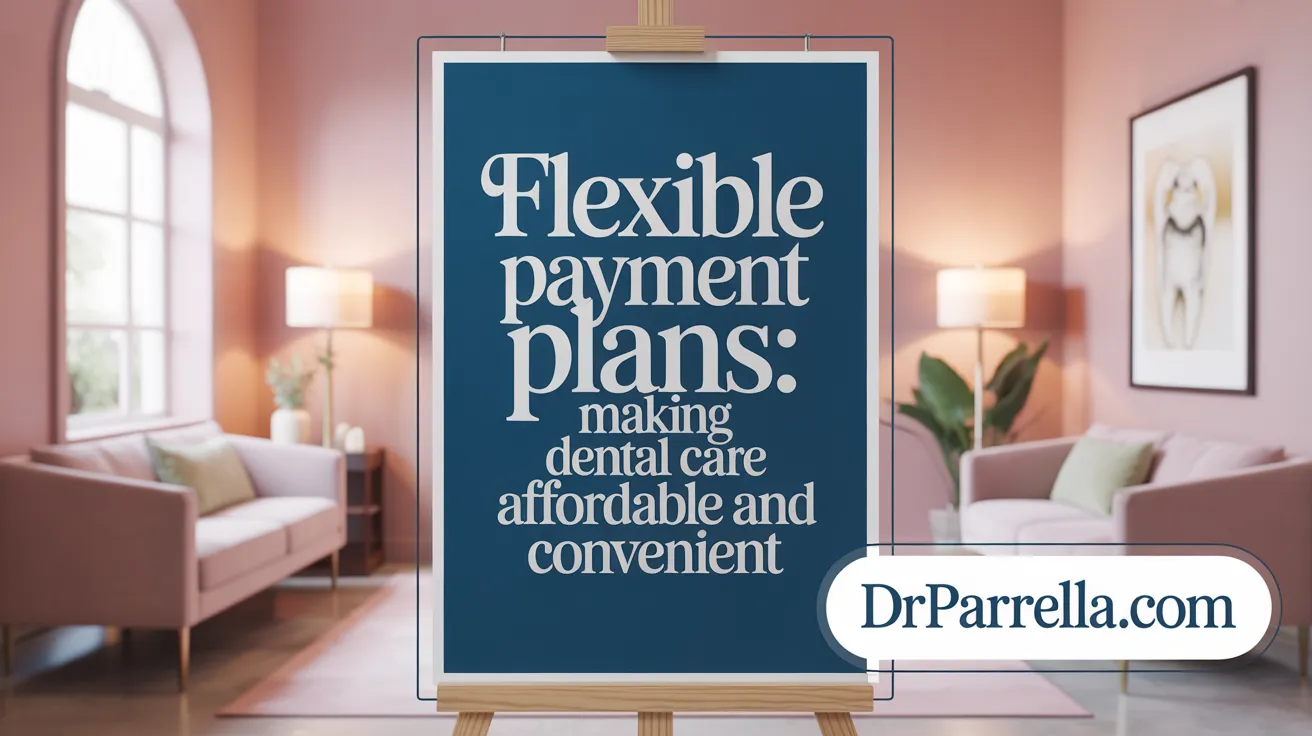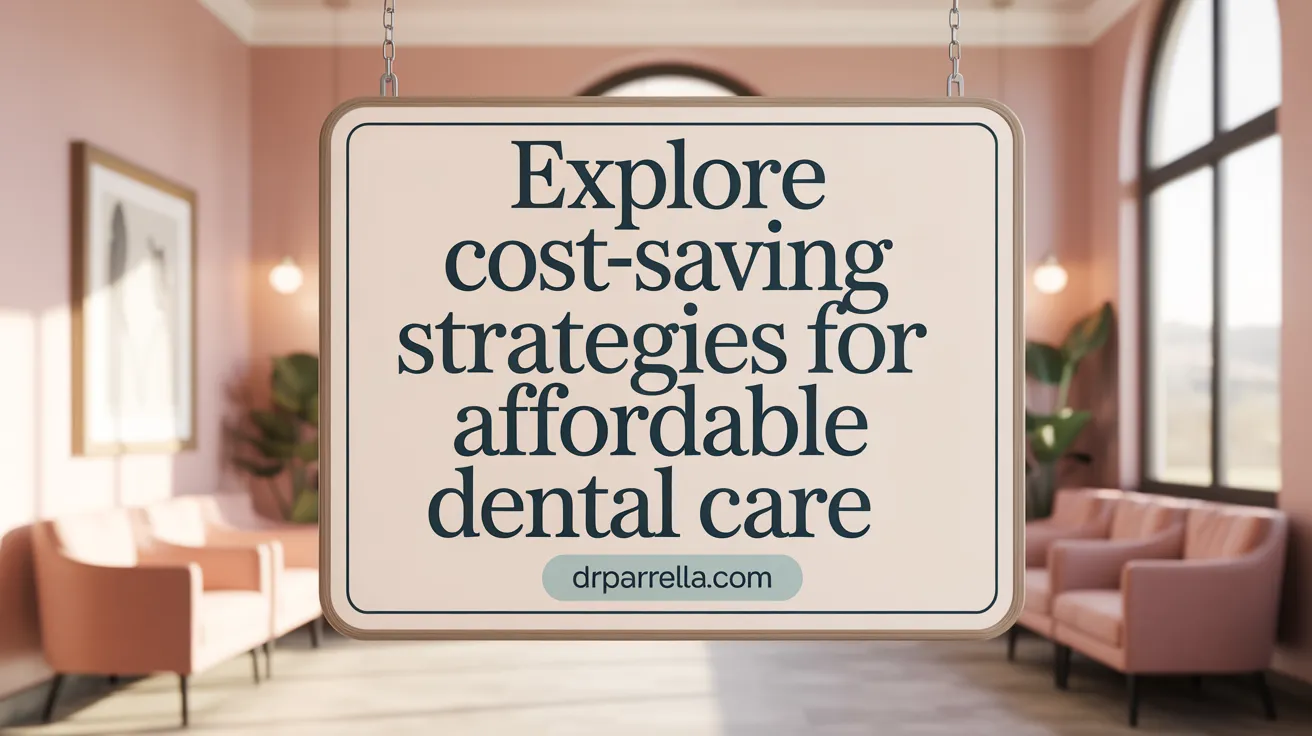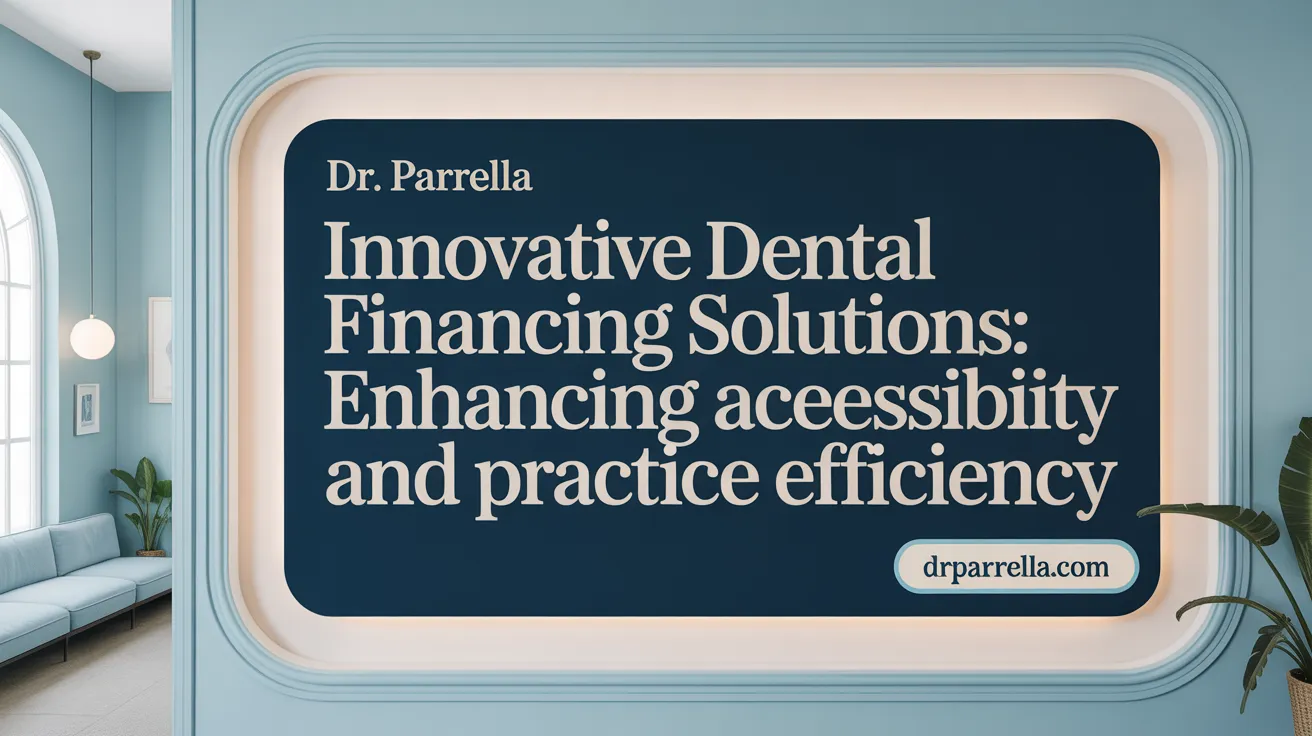Navigating Dental Care Costs with Confidence
Dental care is essential for maintaining overall health, yet many individuals face financial barriers that delay or prevent treatment. Fortunately, a variety of payment options exist to make dental care accessible and affordable. This article explores the diverse financing methods, insurance plans, and cost-saving strategies designed to ease the financial burden and empower patients to pursue the dental treatment they need without compromise.
Understanding Dental Financing Options

How does dental financing work and what are the main options?
Dental financing helps patients afford necessary dental care by spreading treatment costs over manageable dental payments. Most dental offices partner with third-party lenders for dental care who approve approximately 99% of applicants, regardless of credit history, making financing widely accessible.
What is the application process and how do credit checks affect it?
Patients can apply for dental financing online right at their dental visit or pre-qualify for dental loans online beforehand. This prequalification process does not impact the applicant's credit score since it involves a soft credit inquiry only. Actual financing approval may involve a credit check, but many lenders offer high approval rates even for patients with less-than-perfect credit.
What types of dental financing products are available?
There are primarily two main products:
- Dental Credit Cards: These provide a revolving line of credit specifically for dental care, allowing patients to pay for current and future treatments flexibly.
- Unsecured Personal Loans: These loans offer fixed borrowing amounts repaid in set monthly installments over a defined term.
What are the important terms to know when considering dental financing?
- Principal: The original amount borrowed to cover dental expenses.
- Interest: The cost of borrowing, expressed as a percentage of the principal.
- Deferred Interest Dental Plans: Offer a zero-interest period if the balance is paid off within a certain timeframe. Failing to pay on time usually results in retroactive interest charges.
- Loan Term: The length of time over which the loan must be repaid, affecting monthly payment amounts and total interest paid.
- Credit Score: This numerical measure of creditworthiness impacts loan eligibility and interest rates; higher scores often secure better financing terms.
Understanding these dental financing options and terms can empower patients to make informed decisions about managing their dental care costs effectively.
Insurance Plans and Marketplace Dental Coverage

What dental insurance options are available and how do they affect payment?
Dental insurance offers several plan types with different structures and costs. Preferred Provider Organization (PPO) plans permit patients to choose dentists freely within a network, benefiting from negotiated fees. Dental Maintenance Organization (DMO) or managed care plans require selecting a primary care dentist within the network and typically involve copayments per service, with no annual deductible or maximum benefit limits. Learn more about Types of dental insurance plans.
Marketplace dental plans are available when purchasing health insurance and come in two main coverage levels: high and low. High coverage plans have higher monthly premiums but lower copayments and deductibles, while low coverage plans have more affordable premiums but higher out-of-pocket costs. These plans must cover essential preventive services, especially for children under 18, including cleanings and exams, which usually carry no copay. For detailed information, see Dental coverage in the Marketplace.
Children’s dental coverage is mandatory as an essential health benefit, ensuring access to preventive and minor restorative care. Conversely, adult dental coverage in the Marketplace is optional, and health plans are not required to offer it. This distinction affects enrollment and cost management for families versus adults seeking standalone dental benefits. More on this topic is available at Marketplace dental coverage.
Plan expenses can vary widely based on premiums, deductibles, copayments, and annual maximum payouts. For example, some plans cap annual benefits around $1,000 to $1,750 per person, influencing how much a patient may need to pay out-of-pocket for major procedures beyond routine care. Explore Dental Insurance Plans and Affordable dental insurance plans for options and coverage details.
Understanding these plan characteristics helps individuals and families select the best insurance strategy to manage dental costs effectively while maintaining access to necessary dental services. For guidance on affordable dental care and managing dental costs, see Affordable dental care strategies and Dental payment plans and flexibility.
Flexible Payment Plans and In-House Financing

How do dental practices structure flexible payment plans and what are the benefits?
Many dental practices offer flexible dental payment plans directly to patients, which allow spreading the cost of dental treatments over time, often in manageable dental payments, often in manageable monthly installments. These in-house payment plans help patients access necessary care without the immediate financial burden. Such plans can be tailored to individual budgets, improving affordability and patient satisfaction.
In-house payment plans differ from external financing by not involving third-party lenders for dental care or credit cards, which means patients often avoid hard credit checks. This customization and direct management can enhance convenience and privacy.
Properly structured plans comply with federal and state laws, including the Truth in Lending Act (TILA) in dental finance. Dental offices typically ensure legal compliance by consulting attorneys and training staff to clearly communicate terms and conditions, including interest disclosure in financing if applicable.
Offering flexible payment plans benefits both patients and dental practices. Patients experience reduced upfront costs and improved access to care, while practices see increased case acceptance rates, patient retention, and improved cash flow. These plans can serve as a win-win solution for managing dental expenses effectively.
Alternative Affordable Dental Care and Cost-Saving Strategies

What alternative affordable dental care options and strategies exist beyond financing?
Affordable dental care is accessible through multiple avenues beyond traditional financing. Dental schools often have clinics where students provide treatments under supervision at significantly reduced rates, making them a cost-effective choice for patients. For more details on Dental school clinics.
Community health centers offer dental services on a sliding scale based on income, providing care to underserved and low-income populations. Nonprofits like the Dental Lifeline Network and America’s Dentists Care Foundation also provide free or discounted care for adults with special needs and vulnerable groups.
Membership savings plans are an alternative, charging a fixed annual fee for access to discounted services such as cleanings and exams. These plans help patients manage costs by offering consistent savings without the barriers of insurance deductibles or waiting periods.
Government programs play a vital role: Medicaid and CHIP cover dental services for many low-income children and some adults, while veterans with service-connected disabilities may access dental benefits through the Department of Veterans Affairs.
Maintaining good oral hygiene through daily brushing, flossing, and routine dental visits helps prevent expensive treatments. Preventive care reduces the need for costly procedures like crowns or root canals. See tips on Improve oral health affordably.
To manage expenses, patients can use tax-advantaged accounts like Health Savings Accounts (HSAs) or Flexible Spending Accounts (FSAs), which allow pre-tax contributions to pay for dental care. Additionally, negotiating directly with dental providers for reduced fees or joining in-office membership plans can further decrease out-of-pocket costs.
These combined strategies provide multiple paths to affordable dental care beyond financing options, helping patients maintain oral health without excessive financial strain.
Innovative Financing Solutions Empowering Patients and Practices

How do new dental financing platforms improve affordability for patients and efficiency for practices?
Modern dental financing platforms like Cherry and Denefits are transforming how patients and dental practices manage payments. These platforms allow patients to apply quickly, often in under a minute, without triggering hard credit checks, making the financing process simple and accessible.
Cherry offers a variety of flexible payment plans, including interest-free installments over six weeks and longer-term options up to 60 months with zero percent APR for qualifying applicants. Denefits provides no-credit-check payment plans, which greatly benefit those with poor or fair credit scores.
Dental practices see substantial benefits from using such platforms. Cherry users report a 30% increase in case acceptance and a 50% increase in transaction sizes. Moreover, these platforms offer reduced merchant processing fees—sometimes up to 50%—and pay practices upfront within 2-3 business days. This fast payment improves cash flow and reduces administrative burdens, as the platform manages patient repayments directly.
For patients, these innovations mean dental care becomes more affordable and flexible. Instant funding is available for treatments, and multiple plan options accommodate different financial situations and budgets. The combination of accessible application processes, interest-free promotional periods, and extended repayment options makes high-quality dental care financially manageable.
These financing solutions foster a win-win environment that empowers patients with better affordability and practices with improved efficiency and revenue growth.
Making Dental Care Affordable and Accessible
Navigating the cost of dental care can be challenging, but a variety of well-structured payment options make it easier than ever for patients to obtain necessary treatments without financial strain. From traditional dental insurance and external financing to flexible in-house payment plans and innovative platforms offering no-interest terms, patients have multiple paths to affordability. Additionally, alternative low-cost care options and preventive strategies complement financing solutions to reduce expenses overall. By understanding and utilizing these diverse payment methods, individuals can achieve the dental care they need while dental practices benefit from improved patient acceptance and financial stability. Accessibility and affordability in dental care are within reach for everyone, fostering healthier smiles and improved wellbeing.
